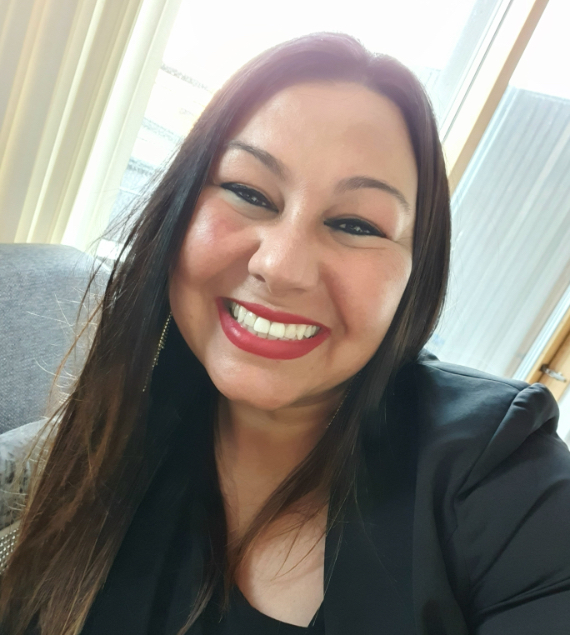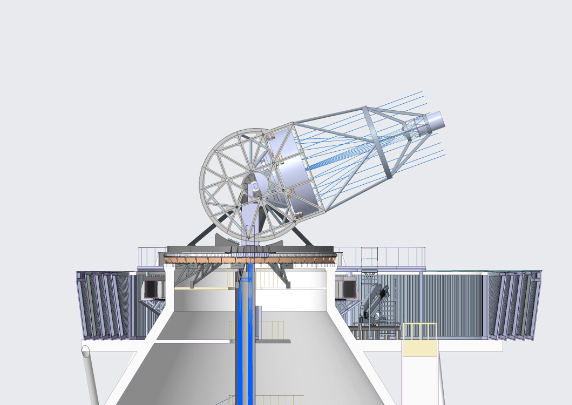Her résumé is impressive. She is impressive. Her ability to spread the word about a complex field of astrophysics such as hers (optics) is fuelled by her enthusiasm and brilliance. She has dedicated herself to understanding what happens inside the Sun in a range of wavelengths that are not detectable from Earth, in order to find answers to the many questions we still have about the Sun, and to understand the phenomenon of particle acceleration that occurs in many other objects, such as black holes or neutron stars.
Ariadna Calcines Rosario (Agaete, Gran Canaria, 1983) is currently Head of the Optical Design Group at the Centre for Advanced Instrumentation at Durham University in the UK. For her doctoral thesis, she developed nothing less than an integral field spectrograph for the European Solar Telescope (EST), one of the two largest solar telescopes in the world, along with the American DKIST. “It was the first time that image slicer technology had been proposed for solar physics, and its application required a number of additional complexities, such as being able to make these mirrors a hundred times smaller than a millimetre,” she explains.
“We are trying to answer the questions we still have about the Sun, as well as to understand the phenomenon of particle acceleration that occurs in many other objects, such as black holes and neutron stars.”
As a result of the spectrograph she developed, Ariadna Calcines won the 2013-2014 award for the best Spanish doctoral thesis in Instrumentation, Computing and Technological Development in Astronomy and Astrophysics, awarded by the Spanish Society of Astronomy. In addition, the Royal Academy of Sciences of Spain and Mastercard awarded her the prize for Young Female Scientific Talent in the category of Applications of Science to Technology. She has not slowed down since.

Ariadna Calcines explains what the solar physics image slicer technology is all about. “Astrophysics is an observational science. All celestial objects that emit light tell us their story, for example: what is going on inside them, what their life has been like, how old they are or how long they will live. All this information,” she continues, “is encoded in the light we observe through our telescopes. And the job of all of us in the field is to find a way to extract that information by applying the laws of physics. In my case, the branch of physics is called optics. Of the various techniques we use, spectroscopy is the one that gives us the most information.”

In order to advance science and observe details of the universe that are still unknown to us, advanced instruments are needed. According to Calcines, this requires astrophysicists to imagine solutions that are not yet possible: “The ideal solution would be to be able to observe a two-dimensional region to obtain the spectrum of all points under the same conditions. This is called integral field spectroscopy.” And this is where image slicer technology comes in: “It uses arrays of miniature mirrors to look at a two-dimensional field, slice it into strips and rearrange them into a slit shape to illuminate a spectrograph to get information from the whole field in a single measurement,” she says.
“Whenever I achieve something in my career, I think of Lila, my high school physics and chemistry teacher in Agaete, Gran Canaria, who changed my life.”
In her current role at Durham, she continues to research image slicers and her aim is to push the boundaries of the technology by proposing solutions for the largest telescopes (GREGOR, EST, VLT, Gemini North) and sometimes in regions of the spectrum that are invisible to our eyes. The main challenge in her field is to reduce the size of the miniature mirrors. The smaller they are, the higher the resolution can be. “I am currently investigating the first application of image slicers for solar space missions in the extreme ultraviolet range, in collaboration with UCL in London,” she explains.
She says that this is a field that has yet to be explored: “We could go to a lower magnitude than is currently possible, allowing us to understand what is happening on the Sun at wavelengths that are not detectable from Earth. This would allow us to answer the questions we still have about the Sun, and to understand the phenomenon of particle acceleration that occurs in many other objects, such as black holes and neutron stars.”
Calcines says she originally wanted to be a journalist, but she studied physics thanks to a teacher: “Whenever I achieve something in my career, I think of Lila, my high school physics and chemistry teacher in Agaete, Gran Canaria. If she happens to read this interview, I would like to thank her and tell her that she changed my life.” Calcines eventually decided to study physics at the University of La Laguna in Tenerife.

Tenacious as she is, the most important moment in her career came when she proposed the image slicer solution for solar physics. She struggled to get people to believe in her idea. She recalls: “I was 23 years old. I had just graduated and it was my first job. I had no experience to suggest something new, especially as the cost and risk were very high and I had been hired to develop a different solution. It took a long time for my ideas to be considered, but I decided to develop them in my spare time. That idea, against all odds at the time, has shaped my career.”
Her message to all young people could not be more inspiring and she is a living example of what she preaches: “Don’t give up on your ideas. Believe in them and fight to make them a reality.”
Comments on this publication